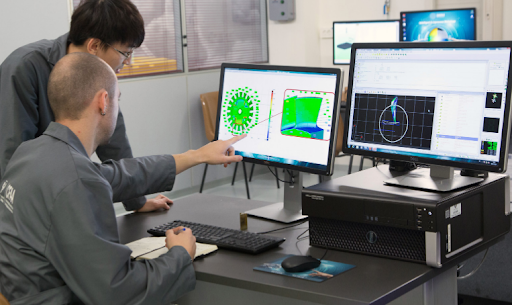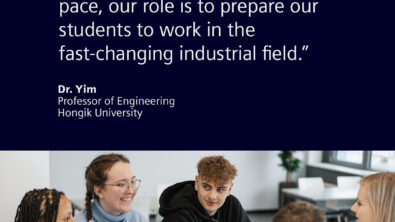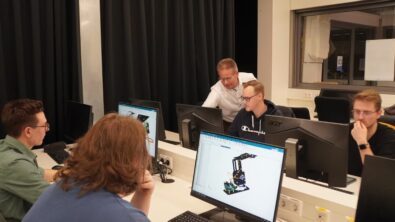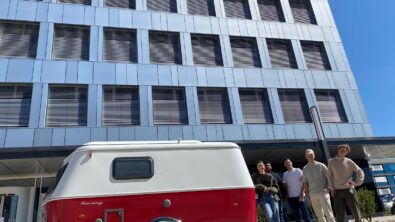University of the Basque Country Provides Future Engineers with Problem-solving Skills for a Sustainable Future

University of the Basque Country uses NX and Simcenter to enable students to tackle industrial and environmental challenges.
No matter what process students use for machining, using NX proves helpful with all of them.
Dr. Haizea González Barrio, assistant professor, lecturer and CAD/CAM modeling specialist at University of the Basque Country.
Using Simcenter STAR-CCM+ helps us cover all of our simulation requirements. It includes CAD functionality beyond what is required to import the geometry, we are not using any other software.
Iñigo Bidaguren, Lecturer on Nuclear Engineering and Fluids Mechanic at University of the Basque Country.
Learning to Design for the Future
University of the Basque Country (UPV/EHU) is a Spanish public university of the Basque Autonomous Community. Founded in 1938 in Bilbao, Spain, the university currently carries out 90 percent of basic research in Basque Country with the help of Siemens technology. Its mechanical engineering and the energy engineering departments use both NX and Simcenter STAR-CCM+ software. These are components of the Siemens Xcelerator portfolio, the comprehensive and integrated portfolio of software, hardware and services. Furthermore, students in the project management and design department use NX for computer-aided design (CAD). This flexible and powerful integrated design, simulation, and manufacturing solution enables users to realize the value of the comprehensive digital twin. Accordingly, the educational training provided by UPV/EHU shows aspiring engineers how to effectively utilize and understand NX for computer-aided design and manufacturing.
Students Utilize NX CAM for Machine Tool Design
The training for Masters of Science engineering students at UPV/EHU includes machinery and its elements, machining processes, design, automation, innovation, management, and information technology (IT). Students use NX for computer-aided manufacturing (CAM) to understand and generate computer numerical control (CNC) code for machine tools. For their final master’s project, students display an in-depth knowledge of the CAM software by researching its programming and simulation mechanisms, adding specific functionalities using the NX open application programming interface (API). The machine tool manufacturers in the Basque Country value graduates with such expertise in complex manufacturing processes that integrate multiple systems.

UPV/EHU Collaborates with Industry
UPV/EHU strives to incorporate practicality by carrying out many of its masters or doctoral thesis projects in close cooperation with industry. For instance, the UPV/EHU Research Group on Advanced Manufacturing Technologies created an Aeronautics Advanced Manufacturing Center (CFAA) that uses commercial rather than academic licenses of NX, allowing for free exchange of designs and CNC programs with industrial partners. In one such exchange, the Spanish Engineer’s Society awarded a prize for the best master project for work on a reliable process for 5-axis milling of knee protheses. Students used NX for programming as well as virtual verification by simulation, writing their own post processors. Drawing on Siemens technology, they learned how to optimize tool paths to achieve a surface quality that supported hygiene and a long product life.

Opportunities for Early Familiarization with Fluid Mechanics
Along with providing meaningful opportunities for its current students, UPV/EHU also provides opportunities for pre-bachelor students to gain early familiarization with fluid mechanics. In the pre-bachelor curriculum, students start with the basics of fluid mechanics, then move on to a course on water and wind turbomachinery installations. In their fourth year, on their path towards the bachelor’s degree, they learn the operation and use of computational fluid dynamics (CFD). During this course, they apply their theoretical knowledge using Simcenter STAR-CCM+, solving and analyzing problems that involve fluid flows using numerical analysis and data structures. These skills are further bolstered through supplementary tutorials provided by Siemens solution partner, ATS Applied Tech Systems.
Improving Sustainable Energy Generation
As innovation continues to accelerate, it also becomes crucial for future engineers to incorporate sustainability into their practices. In preparing students for real-world engineering, UPV/EHU and Siemens emphasize the importance of finding sustainable solutions. Using renewable energy sources to build a sustainable energy system will play a crucial role in decarbonization aimed at reducing the impacts of climate change. Since the Basque Country is located in the Bay of Biscay, the vast potential of wave energy presents a promising opportunity for study. In one bachelor’s degree final project, a UPV/EHU student utilized Simcenter Star-CCM+ to conduct research on how an oscillating water column system could generate electricity from sea waves by displacing air in chambers to drive wind turbines. Additionally, in cooperation with universities in Ireland, France, and Norway, UPV/EHU offers an Erasmus Mundus Master’s in Renewable Energy in the Marine Environment.

We have a future-oriented subject serving a good cause, combined with fascinating digitalization and software skills sought after in the industry. No wonder plenty of students line up to join our courses.
Esteban


